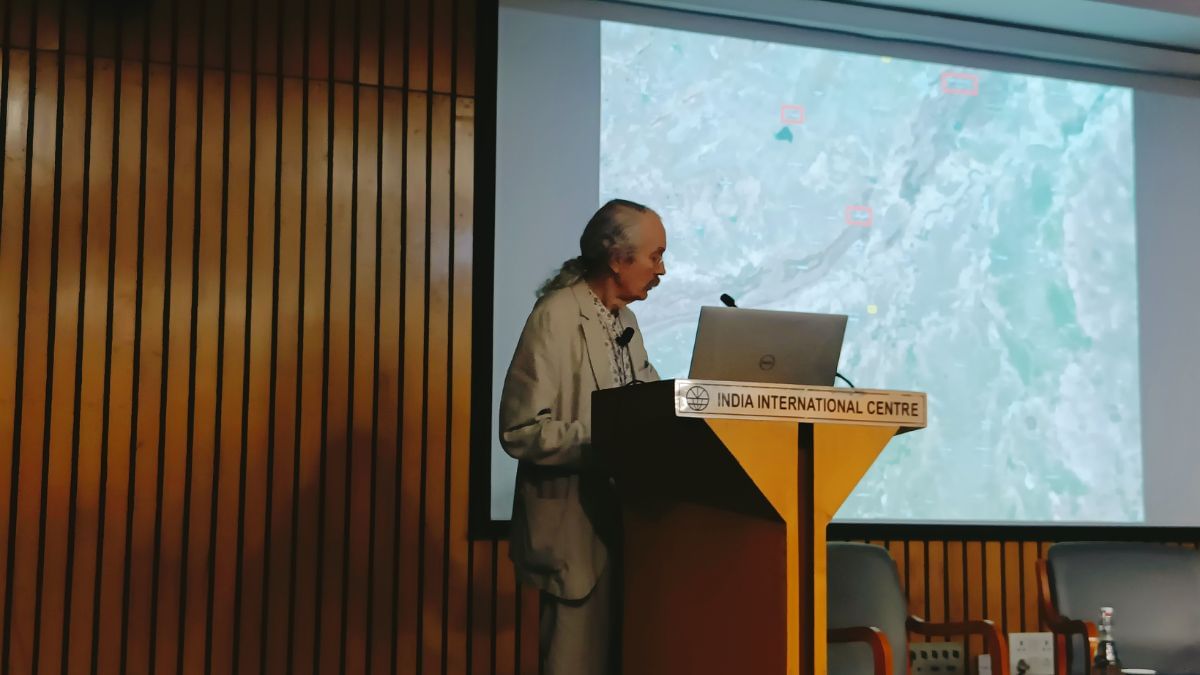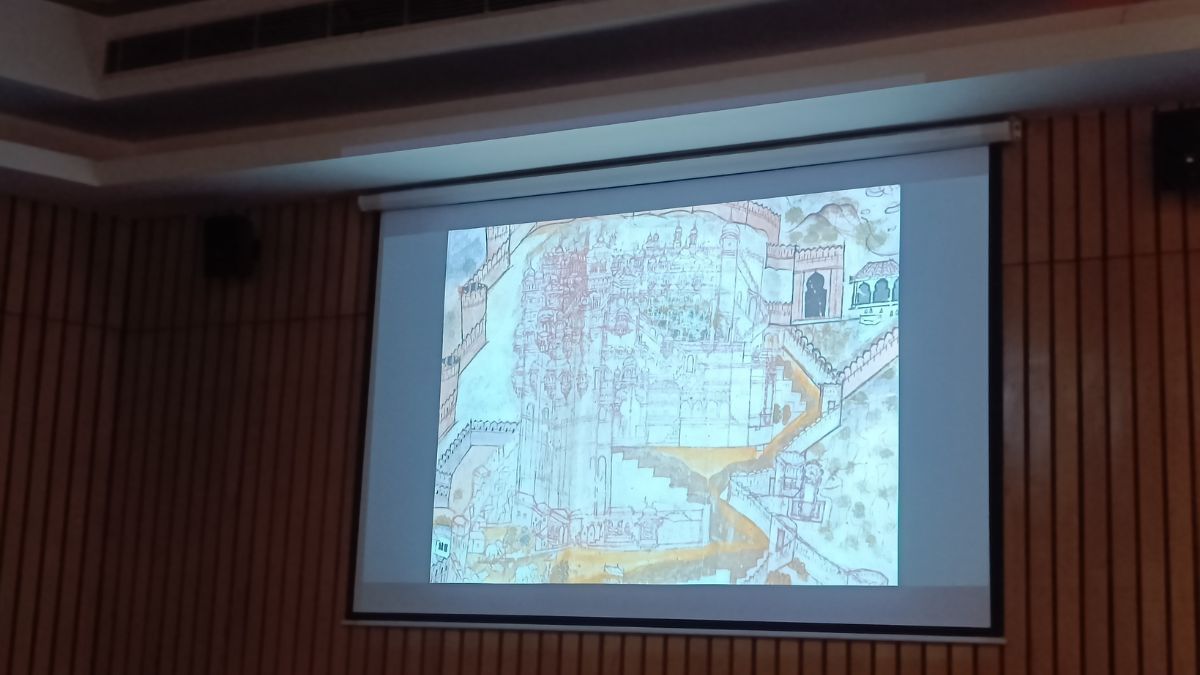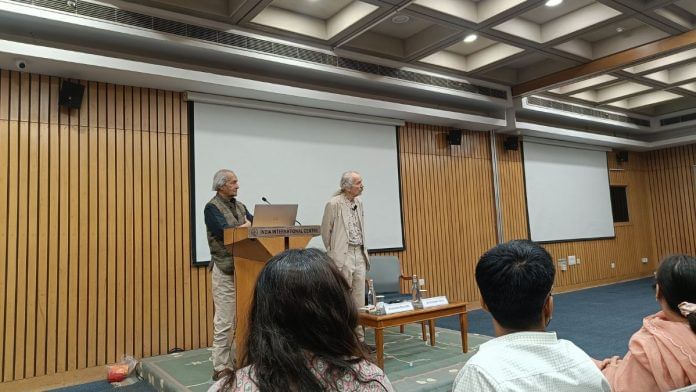New Delhi: German professor Joachim Bautze’s interest in Indian classical music brought him to India four decades ago, but it was Rajasthan’s royal murals that he fell in love with. These murals are the central part of his academic life.
“Finding the murals four decades ago was not an easy task. I did a survey, which took me two and a half years to find the wall paintings in the palaces. In those days, the roads were not very good,” said Bautze, a scholar of Rajasthani wall and miniature paintings, during his lecture titled ‘Bundi: The Earliest Surviving Royal Murals of Rajasthan’ at New Delhi’s India International Centre on 30 October.
In his 50-minute lecture, Bautze spoke about the remarkable murals of the Badal Mahal, first brought to light in 1986 and now recognised as the earliest and most innovative of all the Rajasthani schools of painting.

“Dated around 1610–1620, these jewel-like wall paintings stand out for their vivid naturalistic depictions and historical significance, often compared to the Sistine Chapel in their importance for Rajasthan’s art history,” said art historian Jyotindra Jain. Among the audience were history and art enthusiasts.
Jain said Bautze is best known for his pioneering work on the murals and miniatures of Bundi and Kota. He has also curated and catalogued exhibitions of Indian paintings at museums in San Francisco and Brussels.
Bautze’s most significant contribution, Jain added, is identifying and documenting the painting cycles on the theme of Ragamala in the former Bundi state, a theme that went on to become one of the most popular in Rajasthani painting over the following centuries.
“Ragamala was very well articulated as the foundational work in Bundi and Kota, and later on became so popular in the 18th and 19th centuries,” said Jain.

Also read: West Bengal is a puzzle for this political scientist—’It was failed by its intellectuals’
Murals on the walls
Bautze’s lecture was based on his decades-long documentation of the murals of Bundi and Kota. Last year, at the event organised to promote Kota’s rich culture of miniature art, Bautze said Kota art is the most rewarding.
But he was disappointed with the current state of these murals.
“Now the roads are perfect, but the wall paintings, unfortunately, have disappeared,” he said.
Bautze showcased some of the paintings from Chunar, a historic town near Varanasi, made during the Mughal period. He said that when Humayun came to India, he accompanied Mir Sayyid Ali and Abdus Samad. These two Persian miniature masters were instrumental in founding the Mughal school of painting by blending Persian and Indian styles.

Bautze showed pictures inside the Badal Mahal, which he took decades ago. At the ceilings of the Mahal, there are paintings of Indian gods such as Rama, Sita, and Lakshmana in the pushpaka vimana and along with Krishna in a chariot flying through the sky.
In one of the paintings, Krishna dances with the gopis under the full moonlight.
“On the walls are all the hunting scenes. I was shocked to see that all the animals were taken out 20 years after my first visit,” said Bautze.
The wall paintings were made using a specific technique.
Bautze explained that at Bundi, scrunch nets were used to make the paintings. “It has never been there before in Rajasthani architecture. It’s quite complicated,” he said, adding that this technique was employed in Islamic architecture.
There is no reliable information about who made these paintings, he added.
About the influence on these paintings, Bautze also said that the mural paintings of Rajasthan seem to have a European influence.
“There are life-size figures in the paintings, like in Europe. Also, these paintings were influenced by the Mughals,” he said.
(Edited by Ratan Priya)






